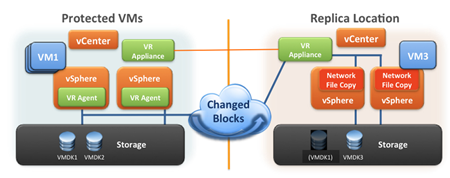What’s New in vCloud Suite 5.5: vSphere Replication and vCenter Site Recovery Manager
August 26th, 2013
VMware has announced its latest update to version 5.5 of its global virtualisation powerhouse, vCloud Suite.
To read the updates for all the suite components, see my post: What’s New in vCloud Suite 5.5: Introduction
vSphere Replication
- The user interface within the Web Client has been beefed up. The VM and vCenter management panes have been enhanced to configure and monitor replication.
- You can now deploy new vSphere Replication appliances to allow for replication between clusters and non-shared storage deployments and also to meet load balancing requirements.
- There are now multiple points-in-time snapshots so if you have VM with an OS corruption that has already been replicated you can select an earlier snapshot to recover from before the corruption occurred. This isn’t the same is replicating VMs with existing snapshots which isn’t supported. Point-in-time snapshots are created at the recovery site after replication.
- There is now Storage DRS Interoperability so replicated VMs can be Storage vMotioned across datastores without interrupting ongoing replication.
- VSAN support has been added to protect and recover VMs running on the new VSAN datastores.
vCenter Site Recovery Manager
What’s New:
 Storage DRS and Storage vMotion are now supported when VMs are migrated within a consistency group.
Storage DRS and Storage vMotion are now supported when VMs are migrated within a consistency group.- VMs running on (Virtual SAN) VSAN datastores can be protected using vSphere Replication. You can use VSAN datastores on both the protected and recovery sites. There are a few considerations when using VSAN and SRM so read the documentation.
- You can now recover and preserve multiple point-in-time snapshots of VMs that were protected with vSphere Replication.
- VMs that reside on Virtual Flash (VFlash) can be protected. VFlash is disabled on VMs after recovery.
- IBM DB2 is no longer supported as an SRM database
Categories: ESX, Update Manager, vCenter, vCloud Director, vCOPS, View, VMware, VMworld networking, SRM, storage, vcenter, vmware, vmworld



Recent Comments